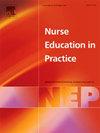A model for predicting student nurse attrition during pre-registration training: A retrospective observations study using routinely collected administrative data
IF 3.3
3区 医学
Q1 NURSING
引用次数: 0
Abstract
Aim
To explore historical student data to identify patterns predictive of attrition risk among nursing students, and hence train a predictive model of an individuals’ risk of leaving the course.
Background
The World Health Organization point to an international shortage of trained nurses, which poses a risk for patient safety and care worldwide. The risk is compounded where the workforce is also aging creating additional pressures on the delivery of quality care. To stabilize the workforce, a healthy supply of newly trained registered nurses is necessary; however undergraduate nursing has one of the highest rates of student attrition (approx. 24 %).
Methods
This study follows a knowledge discovery in databases (KDD) methodology performing an observational analysis of routinely collected student data. The data (1840 students, taken from the pre-existing university business intelligence systems) was modelled for three end points; ‘attrition in 1st year’, ‘attrition in 2nd year’, and ‘failure to complete’. Analysis was performed via step-wise binomial regression.
Results
Several attrition factors have been identified by the model (e.g. students who return from periods of intermittence, are Male and/or non-mature have an increased likelihood to leave).
Conclusion
To our knowledge this is the first study to examine the role of study intermittence on student attrition, or to be built on the pre-existing university business intelligence (BI) systems. The use of pre-existing university BI systems as reported here can serve as the grounding for an individual, tailored approach to retention strategy rather than an approach built on demographic assessment alone.
注册前培训期间护士学生流失预测模型:利用日常收集的行政数据进行回顾性观察研究
目的探索护理专业学生的历史数据,以确定预测护理专业学生流失风险的模式,从而建立个人离开课程风险的预测模型。世界卫生组织指出,国际上训练有素的护士短缺,这对全世界的患者安全和护理构成了威胁。在劳动力老龄化的情况下,这种风险更加复杂,给提供高质量医疗服务带来了额外的压力。为了稳定劳动力,需要大量新培训的注册护士;然而,本科护理专业是学生流失率最高的专业之一。24 %)。方法本研究采用数据库知识发现(KDD)方法,对常规收集的学生数据进行观察性分析。数据(1840名学生,来自已有的大学商业智能系统)为三个端点建模;“第一年的人员流失”,“第二年的人员流失”,以及“未能完成”。采用逐步二项回归进行分析。结果该模型确定了几个流失因素(例如,从间歇期返回的学生,男性和/或不成熟的学生离开的可能性增加)。据我们所知,这是第一次研究学习间歇对学生流失的作用,或者是建立在现有的大学商业智能(BI)系统上。如本文所述,使用已有的大学商业智能系统可以作为个性化、量身定制的挽留策略的基础,而不是仅仅基于人口统计评估的方法。
本文章由计算机程序翻译,如有差异,请以英文原文为准。
求助全文
约1分钟内获得全文
求助全文
来源期刊

Nurse Education in Practice
NURSING-
CiteScore
5.40
自引率
9.40%
发文量
180
审稿时长
51 days
期刊介绍:
Nurse Education in Practice enables lecturers and practitioners to both share and disseminate evidence that demonstrates the actual practice of education as it is experienced in the realities of their respective work environments. It is supportive of new authors and will be at the forefront in publishing individual and collaborative papers that demonstrate the link between education and practice.
 求助内容:
求助内容: 应助结果提醒方式:
应助结果提醒方式:


